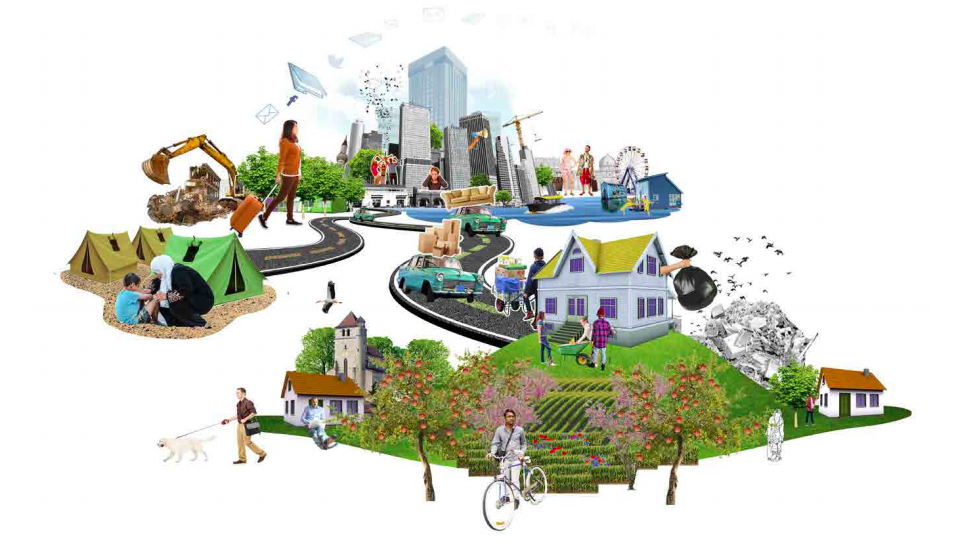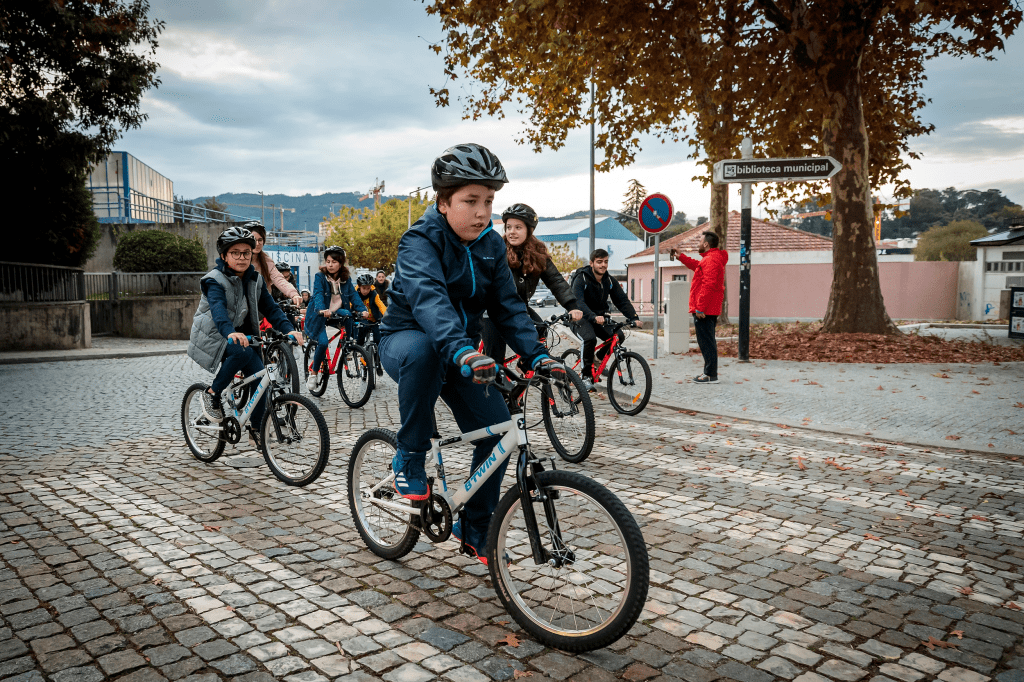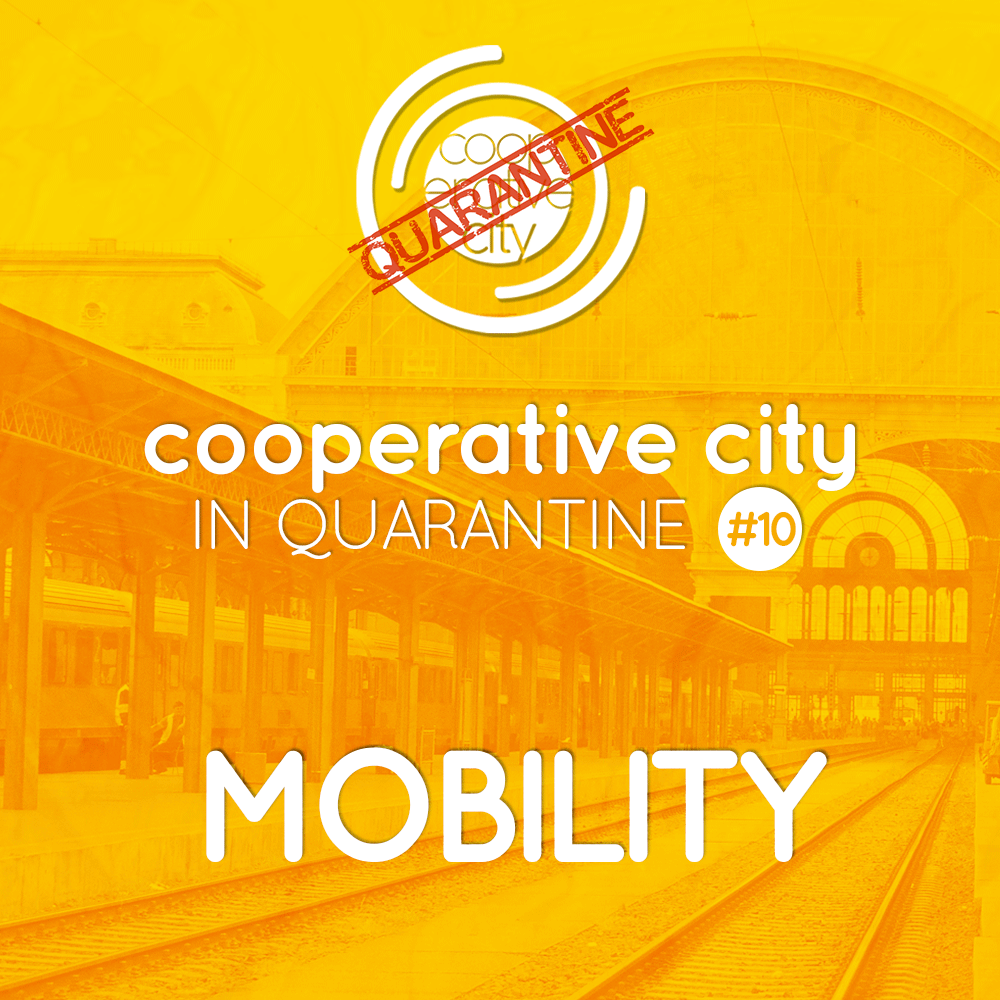The Covid crisis is changing our lives, and mobility is definitely going to be one of the hottest topics – and one of the most important challenges of “returning to normal”. Now that we are slowly exiting the quarantine, a big challenge is related to how we move around our cities, and how it is possible to do it safely and in a sustainable way. On the one hand many people are fearful of taking public transport and a peak of car usage is expected, for those who can afford it. On the other hand many cities around Europe and beyond are increasing the available space for bike lanes and pedestrian streets. This episode of Cooperative City in Quarantine has explored some of the challenges and opportunities that are arising from the current situation in terms of broad accessibility and sustainable mobility.
Daniela Patti, urban planner and researcher at Eutropian and Domenico Schillaci co-founder from PUSH – Palermo, Italy moderated a panel on the present and future challenges of mobility.
Contributors for the panel are:
Patrizia Marani – URBACT coordinator – City of Parma, Italy
Mona Jabbari – JPI Urban Europe researcher – University of Minho – Braga, Portugal
Antonio Solinas – GreenShare – Cagliari, Italy
Domenico Schillaci – PUSH, an innovation laboratory in Palermo is developing new mobility solutions. PUSH designed a survey on mobility and reached about 1500 respondents. Results show that about 50% of respondents don’t mind working from home, if possible. Environmental awareness is also on the rise, with a growing number of people who prefer using bike or car sharing rather than their own car.
What are the biggest challenges cities are facing at the moment in terms of mobility and in terms of accommodating the needs of the population?
Patrizia Marani – Our latest project, Thriving Streets, is a network of 10 European cities dealing with mobility and public spaces. Since the beginning of the Covid outbreak, we have also been focusing on the impact of the crisis on sustainable mobility. We want to understand the economic and social development of the city and how these aspects are linked to mobility. Mobility is at the crossroad between different urban policies, so we monitor and try to foster the ties between mobility and accessibility, social inclusion and gender gap, for example. How can we ensure the right to mobility of citizens while ensuring safety during the risky times we are living in? How we can support sustainable mobility in a time when everybody is expecting an increasing use of cars? We take this project as an opportunity to experiment and give answers to the new needs of cities and citizens.

Mona Jabbari – Smart Pedestrian Net is a project we are testing in the cities of Porto and Bologna with the aim of guiding urban and transportation policies. We consider walkability as one of the important dimensions of smart, sustainable and inclusive cities. During this lockdown, the lifestyle of citizens has drastically changed while public transport has become less reliable and safe for people to use. So walking, along with cycling, is definitely the easiest and safest way to move around the city for most people. Regarding walkability, one of the main issues is that usually pedestrian access is favoured within the centre of the city with very few or no direct pedestrian connections to the peripheral areas. As citizens, city administrations and stakeholders, we must understand the value of pedestrian mobility and need to invest on pedestrian networks as they are an answer to sustainability, health and environment protection. Keeping this in mind, we are redesigning urban policies on accessibility in order to build a pedestrian infrastructure. We all know that in modern times urban planning revolves around the use of cars, so what we do as urban planners is rethinking policies and redesigning guidelines. Our model implies the participation of citizens in order to better meet their real needs. And of course, the pedestrian-friendly structure must go hand in hand with a more efficient and safer public transport network.
How can we work together to make public transport safe, efficient and sustainable?
Antonio Solinas – One of the main issues we have been facing for decades is rush hours, and during this Covid-19 crisis crowded spaces – and crowded public transport – are a threat to our health. Increasing the number of ways people can move in the city can modify forecasts and give us a glimpse of the future of mobility. Digitalisation and ICT (Information and Communication Technologies) can facilitate the policy process redesign, while e-ticketing mobile apps that also track and monitor the quantity of users can definitely help public administrations plan more efficient public transport strategies. Of course, this kind of approach can only work if municipalities promote new, healthier, safer mobility habits (for example by investing in urban cycle tracks, pedestrian access, car sharing and bike sharing) and increase frequency during peak hours while encouraging smart working in order to prevent crowds.
What will cities need to focus more on in the coming months?
Patrizia Marani – The Coronavirus outbreak has now become an opportunity to speed up plans that were already in place before. Mobility is especially linked to the issue of air quality. Unfortunately, Parma is located in one of the most polluted areas of the continent, making air quality a factor we need to monitor while investing in new solutions. Improving bike sharing services, providing incentives for citizens to buy bikes and extending our bike lane network are initiatives that can tackle pollution in our city. Another initiative we are working on is speed reduction in the inner city, so to encourage walking and cycling. Also, investing on public transport frequency and on low emission buses and trolley buses is a necessary measure to make people trust public transport and leave their cars at home.

What is the rationale behind the introduction of low-speed zones?
Patrizia Marani – This crisis showed how much the air quality can improve by simply reducing motorised traffic. If we make the use of private cars less convenient while creating an efficient transport network that includes pedestrian zones and bike lanes we give public spaces back to the people, who will be encouraged to walk and use public transport. They will experience the city in a different way, there will be more people in the street, and this will support local businesses, exactly those that have been suffering the most during this lockdown. We still have a lot to learn and are open to exchange practices with other cities in order to make it work.
Are there ways to make citizens more aware of pollution and of the active role they can play in tackling this major issue?
Mona Jabbari – The Smart Pedestrian Net aims at assessing the conditions provided to pedestrians, estimating the cost and benefits of promoting walkability and developing a new navigation system. These goals are not easy to reach, and definitely not fast, especially in a time when everything is changing day by day. The navigation system we are developing will map all pedestrian paths, helping citizens walk through the city as smoothly and as quickly as possible, contributing to less traffic and pollution. We are also considering an app that sends alert messages to users whenever they find themselves in too crowded spaces, so that they can immediately move to less crowded areas. But this requires time and most of all the participation of active and farsighted citizens. It’s a different perspective that we need to test.
Patrizia Marani – Temporary installations like “pop-up” bike lanes can help citizens understand the impact of new sustainable solutions, and make these temporary experiments more efficient and permanent. If we look at the crisis from a positive point of view, we have a great opportunity to test new approaches towards mobility and improve the quality of life.

Can the use of ICT help transport companies and municipalities manage the flow of people, and how easily can people change their habits?
Antonio Solinas – Our company is more focused on smart ticketing solutions and on carpooling for private companies. Yet, encouraging an intersectoral and multidisciplinary approach that involves educators, psychologists and sociologists, municipalities can understand the real needs of the people. Our company’s mission also includes the creation of an urban ecosystem where public and private transport work in synergy. We would like to cross-check the data from public and private transport companies in order to identify gaps and think about new solutions. For example, having a unique ticket for both public transport and private services such as car sharing or bike sharing would facilitate mobility as it would encourage people not to take their car and move using public and shared transport, thus reducing traffic, and, in turn, pollution.
In order to prevent a Coronavirus relapse, can you see the possibility of using contact-tracing apps to prevent too many people from taking the same means of transport, and are there any apps that can help passengers make choices based on safety and physical distance?
Antonio Solinas – Even though technology is mature enough to implement such systems, it still isn’t feasible. For it to work, everybody should constantly use these apps, and the data should constantly be cross-checked. What I consider more feasible for municipalities is location-tracking: by counting how many mobile phones there are on a bus, for example, we could know how many people are in the same space and have.
Watch the full video


